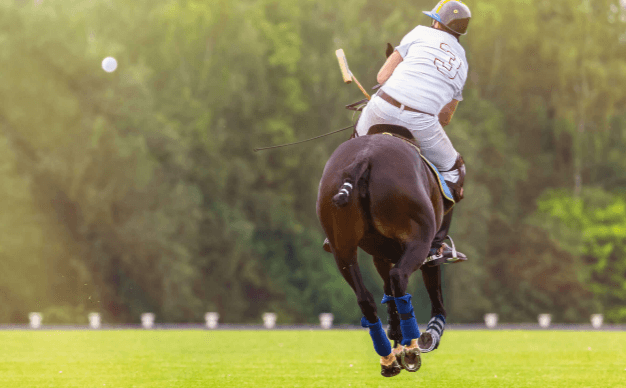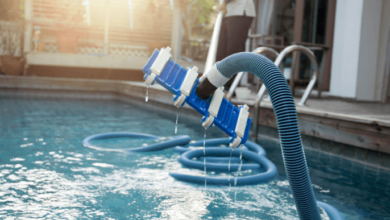How do players and horses train for polo matches?

Introduction
Polo, often termed “the sport of kings,” is a fast-paced, high-stakes game that requires immense skill, strategy, and synchronization between players and their horses. This article delves into the comprehensive training regimens for both players and horses, shedding light on the preparation necessary to excel in this challenging sport.
Understanding Polo
What is Polo?
Polo is a team sport played on horseback, where players aim to score goals by hitting a small ball into the opposing team’s goal using a long-handled mallet. It’s a game that combines speed, strategy, and skill, requiring both players and horses to work in perfect harmony.
The History of Polo
Originating in Persia over 2,000 years ago, polo has a rich history and has evolved significantly over the centuries. Initially played as a training game for cavalry units, it eventually became a sport enjoyed by royalty and nobility across the world.
Basic Rules of Polo
A polo match typically consists of four to eight periods called chukkas, each lasting seven minutes. Each team has four players, and the objective is to score the most goals. Players must change horses frequently to ensure the animals remain fresh and energetic throughout the match.
Training Regimen for Polo Players
Physical Conditioning
Polo players need exceptional strength, stamina, and flexibility. Their training often includes cardiovascular exercises, strength training, and flexibility workouts. Core strength is crucial, as it helps maintain balance and control while riding.
Skill Development
Skill development involves practicing hitting techniques, riding skills, and understanding the nuances of the game. Players spend hours perfecting their swing, positioning, and coordination with their horses.
Strategy and Tactics
Understanding and implementing strategies and tactics is vital. Players study game footage, learn various plays, and practice situational drills to improve their strategic thinking and on-field decision-making.
Mental Preparation
Mental toughness is essential in polo. Players engage in visualization techniques, mindfulness, and stress management practices to enhance their focus, concentration, and resilience under pressure.
Horse Training for Polo
Selecting the Right Horse
Choosing the right horse is critical for polo. Ideal polo ponies are agile, responsive, and have a calm demeanor. Thoroughbreds or crossbreeds are commonly used due to their speed and stamina.
Basic Training Techniques
Basic training involves familiarizing the horse with the equipment, teaching them to respond to commands, and ensuring they are comfortable with the fast-paced nature of the game.
Advanced Training for Polo
Advanced training includes refining the horse’s agility, speed, and responsiveness. Horses are trained to make sharp turns, accelerate quickly, and stop abruptly, mimicking the movements required during a match.
Conditioning and Fitness
Just like players, horses undergo rigorous conditioning to build their strength and endurance. This includes interval training, long-distance trotting, and exercises that improve their cardiovascular health.
Nutrition and Diet
Player Nutrition
Polo players follow a balanced diet rich in proteins, healthy fats, and carbohydrates to maintain their energy levels and support muscle recovery. Hydration is also crucial, especially during intense training sessions and matches.
Horse Nutrition
Horses require a diet tailored to their high-energy demands. This typically includes quality hay, grains, and supplements to ensure they have the necessary nutrients to stay strong and healthy.
Equipment and Gear
Player Gear
Players need specific gear, including helmets, knee guards, gloves, and boots, to protect themselves during the game. The mallet, made from bamboo or cane, is a critical piece of equipment for hitting the ball.
Horse Gear
Horse gear includes saddles, bridles, and leg wraps. Proper fitting gear is essential to ensure the horse’s comfort and safety during play.
The Role of a Polo Coach
Coaching Techniques
Polo coaches use a variety of techniques to train players, from one-on-one sessions to team drills. They focus on improving individual skills and developing team strategies.
Importance of a Coach
A good coach is invaluable in polo, providing guidance, feedback, and motivation to players. They help players refine their skills and develop the mental toughness needed for competitive play.
Common Challenges in Polo Training
Physical Injuries
Injuries are common in polo due to the sport’s physical demands and the risk of falls. Players must take preventive measures and follow proper recovery protocols to stay fit.
Mental Challenges
Mental challenges include dealing with pressure, maintaining focus, and overcoming setbacks. Players often work with sports psychologists to develop coping strategies.
Pre-Match Preparation
Warm-up Exercises for Players
Players engage in dynamic stretching, light cardio, and practice swings to prepare their bodies for the match. Warm-up routines help prevent injuries and improve performance.
Warm-up Exercises for Horses
Horses also need to warm up with light trotting, cantering, and specific drills to loosen their muscles and prepare them for the intense physical activity of a match.
Post-Match Recovery
Recovery Techniques for Players
Post-match recovery for players includes stretching, hydration, and using techniques like ice baths or massages to reduce muscle soreness and promote recovery.
Recovery Techniques for Horses
Horses need proper cooling down after a match, which includes walking them, providing adequate hydration, and sometimes using cold therapy to soothe any muscle strains.
The Importance of Teamwork
Building Team Cohesion
Teamwork is crucial in polo. Building team cohesion involves regular team practices, effective communication, and understanding each player’s strengths and weaknesses.
Communication on the Field
Effective communication on the field ensures that players can coordinate their movements and strategies seamlessly, enhancing their overall performance.
Case Studies of Top Polo Players and Horses
Profiles of Renowned Players
Studying the careers of top polo players provides insights into the dedication and skills required to succeed in the sport. These profiles highlight their training routines, achievements, and contributions to the game.
Legendary Polo Horses
Legendary polo horses are celebrated for their speed, agility, and intelligence. These horses often have exceptional training and natural abilities that set them apart on the field.
Frequently Asked Questions
How do players and horses train for polo matches?
Players and horses undergo rigorous and specialized training routines. Players focus on physical conditioning, skill development, strategy, and mental preparation. Horses are selected for their agility and trained through basic and advanced techniques to enhance their performance and responsiveness.
How often do polo players and horses train?
Polo players and horses typically train several times a week. The frequency and intensity of training sessions vary depending on the season, upcoming matches, and individual conditioning needs.
What is the average career span of a polo horse?
The average career span of a polo horse is around 10-15 years, depending on their health, training, and the level of competition they participate in. Proper care and conditioning can extend their playing years.
What are the most common injuries in polo?
Common injuries in polo include fractures, sprains, and concussions for players, while horses often face leg injuries, muscle strains, and joint issues. Both players and horses require prompt medical attention and rehabilitation for any injuries.
How can beginners get started in polo?
Beginners can start by taking riding lessons, learning the basics of horse care, and joining a local polo club. Many clubs offer beginner programs and training sessions to introduce new players to the sport.
What are the essential skills for a polo player?
Essential skills for a polo player include riding proficiency, strong hand-eye coordination, strategic thinking, and effective communication. Physical fitness and mental toughness are also crucial for success in the game.
Conclusion
Polo is a demanding sport that requires dedicated training for both players and horses. From physical conditioning and skill development to nutrition and mental preparation, every aspect of training is crucial for peak performance. Understanding the rigorous training routines.






